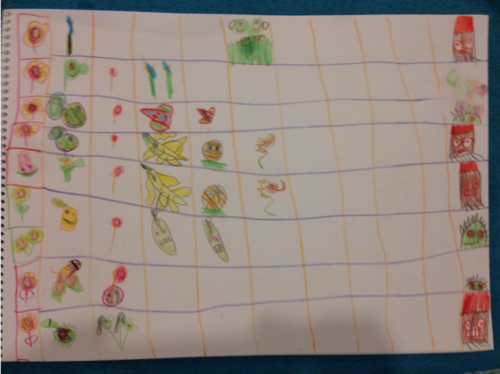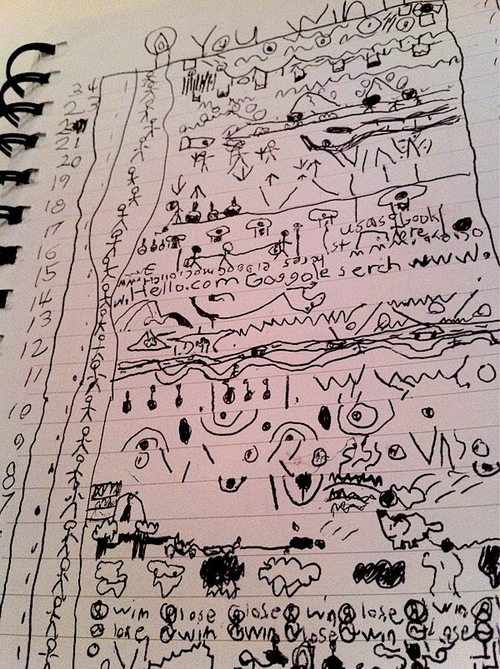
"my son has limited screen time so he plays @PlantsvsZombies on paper" says Boian Tzonev in an insightful tweet.
At some point, I'll have to investigate this. A phenomenon that always fascinates me: how players use paper as a (brick-and-mortar?) substitute to video games when devices are not available, or as a complement (for taking notes, drawings maps, etc.).

Another example of paper video game found on boing boing
Why do I blog this? This is definitely fascinating. Not just because you see kids' fantasies and ways to change mediums. It's intriguing because it reveals how a game mechanic, or a graphic pattern, circulates and mutates to create a curious experience. I've seen once kids playing together on paper and I enjoyed observing how they "filled the gap", how the absence of the mighty computer was turned into creative engine.
Plus, I find this interesting because it obviously leads to curious game design propositions, and bc it makes me think of how to take this into consideration in video game design itself: how would you enable the other persons around a player to use paper to improve the game? Can one create a game in which the person holding the controller needs a friend to use a hand-drawn map to help her?
Besides, no one here thought of booklets with video game grids, Zelda open world maps in B&W versions, Super Mario Sunshine levels... with weird paper game mechanics so that players can "interact" with them? I'm pretty sure this exist. The Star Wars starfighter battle book series is a good start but still...

Update: another curious example found here, it looks like UX prototyping.
